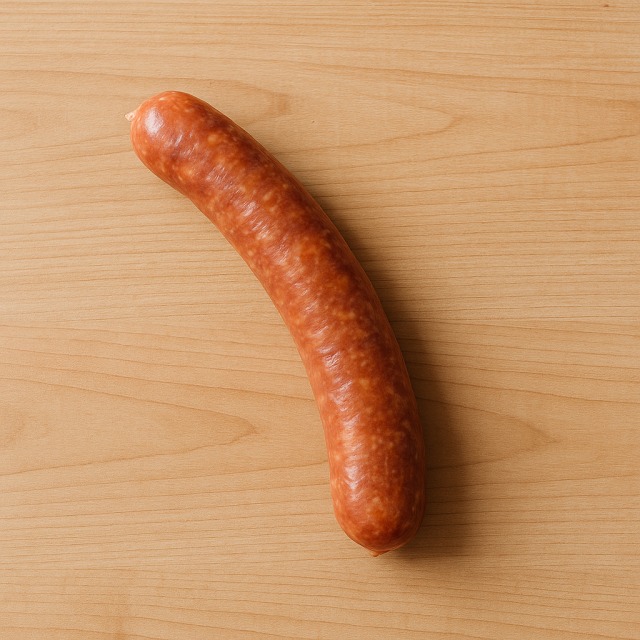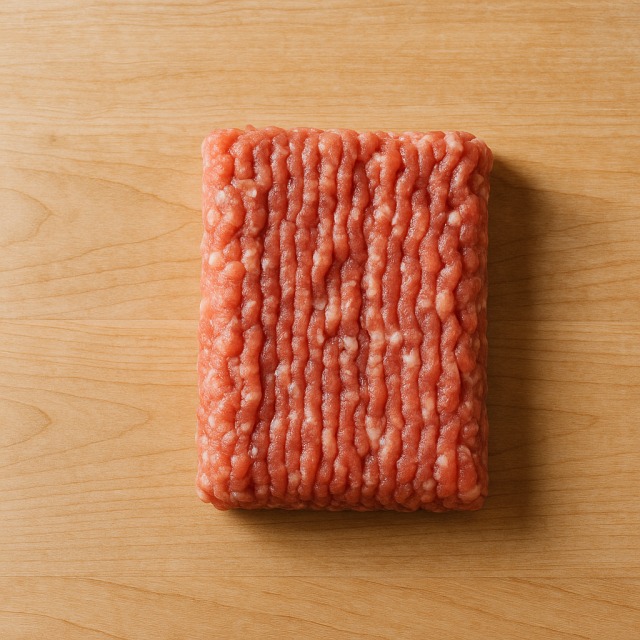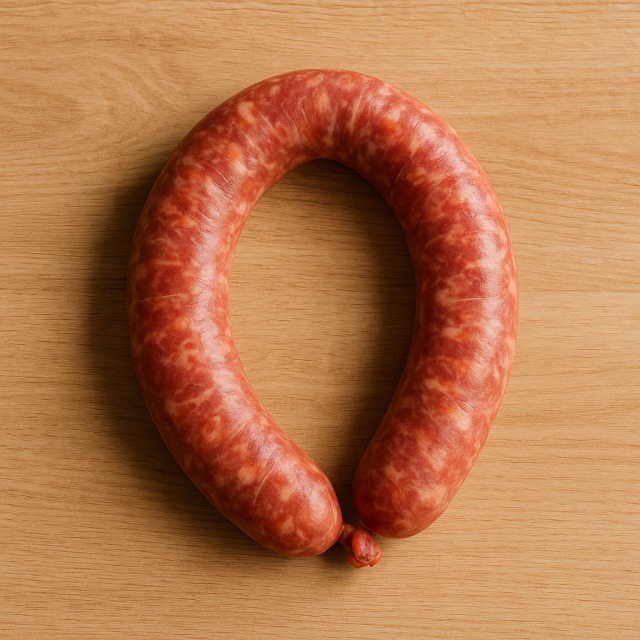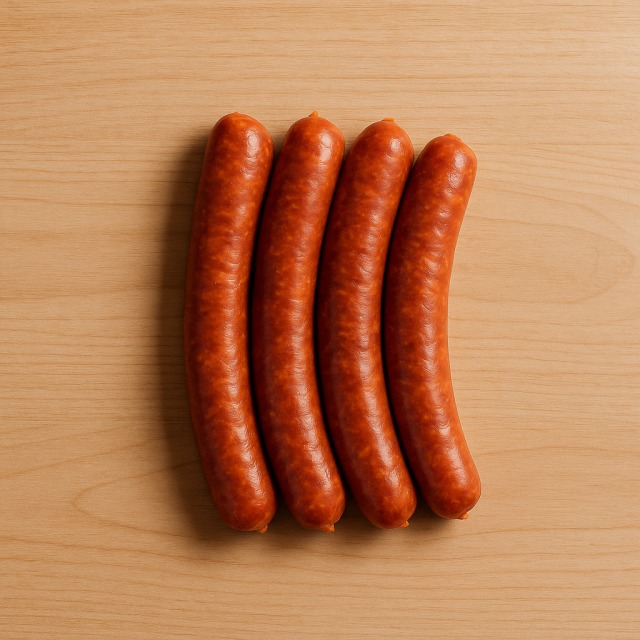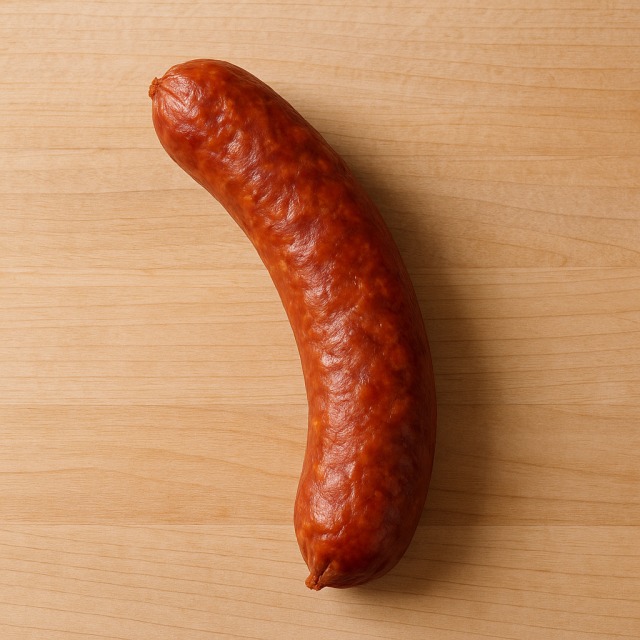Calorie Chart / Meat & Eggs / Sausage - Frankfurter
How Many Calories Are in Frankfurter sausage?
Calculation of the nutritional value & Recommended Dietary Intake of frankfurter sausage
For g and a calorie requirement of kcal
| Calories 124 kcal | Proteins 5.2 g | Lipids 11 g | Carbohydrates 0.6 g |
| 6% | 7% | 16% | 0% |
Health benefits of frankfurter sausage

Frankfurter sausage - 100g
Calories 310 kcal
Proteins 13 g
Lipids 28 g
Carbohydrates 1.5 g
Frankfurter sausage is considered a high-calorie food: every bite concentrates a significant amount of calories that can quickly add up in a meal. If you are monitoring calories because of weight management or athletic performance, it is helpful to remember that this sausage is far more calorie-dense than most lean meats or vegetables.
On the positive side, frankfurter sausage provides complete proteins rich in essential amino acids, along with vitamin B12, niacin (B3), and vitamin B6, which all help energy metabolism. It is also a source of heme iron, zinc, selenium, and phosphorus. These micronutrients support red blood cell formation, immunity, and muscle recovery—an interesting point for athletes who keep a close eye on calories but still want micronutrient coverage. Sodium is high, so people sensitive to salt or tracking calories via processed food intake should stay vigilant.
Historically, the sausage takes its name from Frankfurt-am-Main, where pork sausages were sold as early as the 13th century. It later crossed the Atlantic with German immigrants and became the basis of the modern "hot dog." Knowing this background will not change its calories, yet it may help you enjoy it mindfully and slice thinner portions when you need to rein in calories. Partnering it with tangy mustard or fermented sauerkraut adds flavor without significantly increasing calories.
Tips for incorporating frankfurter sausage into a balanced diet
If you enjoy frankfurter sausage but want to balance its calories, combine one sausage with a generous helping of steamed broccoli or a raw carrot salad. Vegetables add fiber and volume with very few calories, making the overall plate lower in calories while remaining satisfying.
For a lighter hot-dog-style meal, slip the sausage into a small slice of wholemeal bread, top with crunchy onions, and a teaspoon of mustard. Whole grains slow down digestion and help stabilize blood sugar even when calories are on the higher side.
Fans of traditional German flavors can prepare a reduced-fat skillet by slicing the sausage thinly and stir-frying it with cubed potato, diced onion, and plenty of shredded cabbage. By doubling the vegetable portion, you dilute calories per forkful yet keep the smoky taste.
Finally, athletes needing quick post-workout calories can pair half a sausage with a serving of rice and a diced apple salad. The mix supplies fast carbohydrates, proteins, and electrolytes, but always remember to calculate total calories so the meal fits your daily target. Counting calories, adjusting portion sizes, and surrounding the sausage with nutrient-dense sides are the simplest ways to keep its calories under control.
Frequently Asked Questions
- How many calories are in frankfurter sausage?
- There are 310 kcal per 100 g.
- Is frankfurter sausage good for a high-protein diet?
- The sausage supplies 13 g of protein per 100 g, but it also brings many calories and 28 g of fat. If you need proteins with fewer calories, a lean cut such as chicken breast may be a better choice.
- How can I lower the calories of a meal that uses frankfurter sausage?
- Reduce the portion to 50–60 g, add large servings of low-calorie vegetables like zucchini or spinach, and use condiments such as mustard instead of creamy sauces. This strategy cuts calories while maintaining flavor.
- Are the calories in frankfurter sausage mainly from fat?
- Yes. Roughly 80 % of its calories come from fat, explaining why the total calories are high even though the sausage is small.
- How does frankfurter sausage compare in calories with a Montbéliard sausage?
- Both are calorie-dense, but recipes vary. Frankfurter sausage averages 310 kcal per 100 g, while Montbéliard often ranges between 280–300 kcal. Always check the label because smoking and added pork fat can change calories.
Similar foods
Information provided by Calorie Menu may contain inaccuracies or errors. It cannot, under any circumstances, substitute medical advice or medication.
